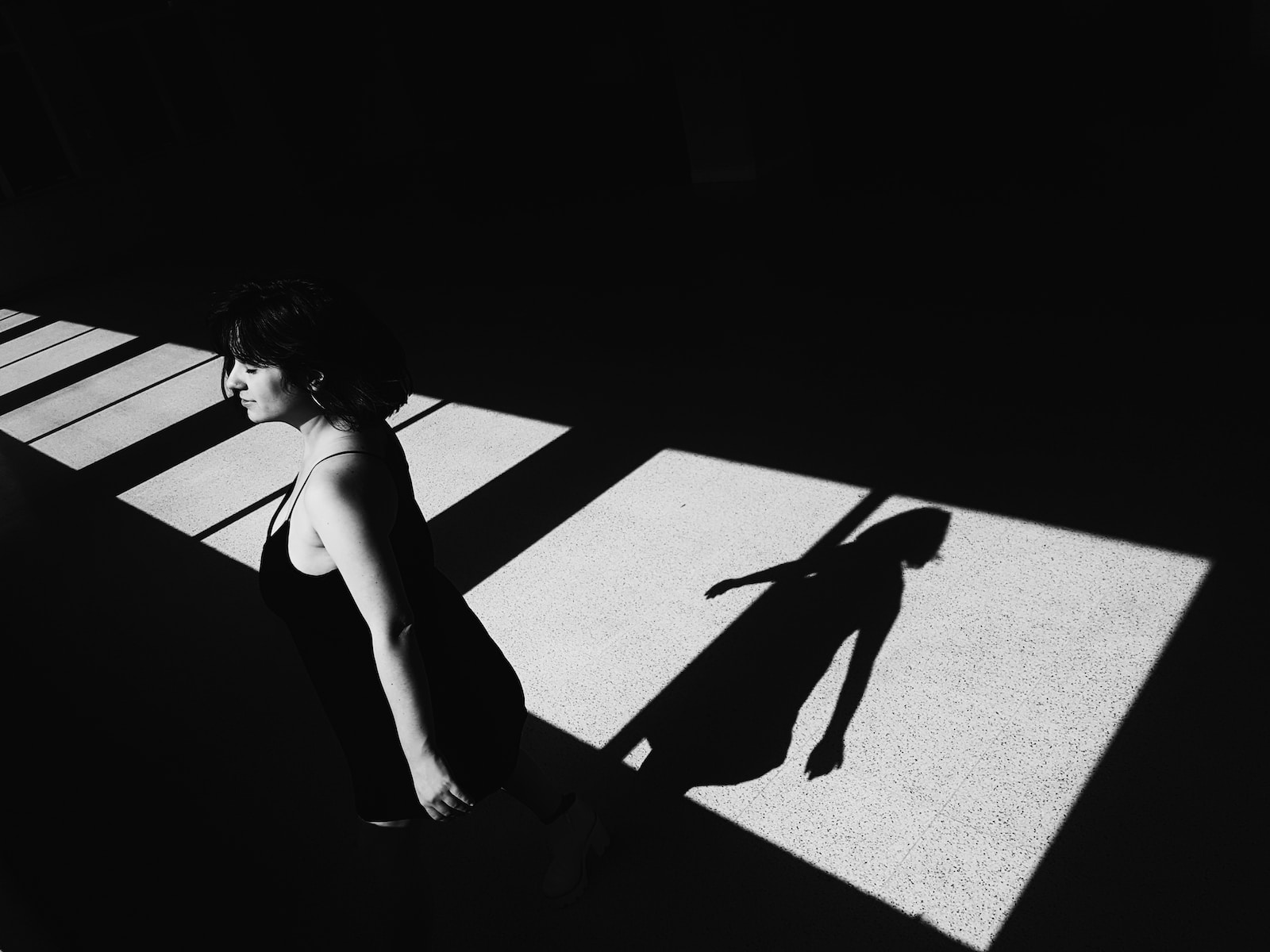Welcome to “Balancing Act: Achieving Visual Weight in Photographic Composition!” In this blog, we will explore the art of visual balance in photography and delve into the concepts of symmetry and asymmetry. Discover the secrets to distributing visual weight in your frames, creating well-balanced images that captivate and engage the viewer. Whether you’re a beginner or a seasoned photographer, this blog will provide valuable composition tips and techniques to elevate your photography to new heights.
Table of Contents
Understanding Visual Balance
Visual balance is a fundamental aspect of photography that can significantly impact the overall impact and aesthetics of an image. It involves strategically distributing visual weight within the frame, creating a harmonious composition that pleases the eye. Achieving visual balance helps to guide the viewer’s gaze, emphasize key elements, and evoke a sense of harmony and stability.
The Role of Symmetry
Symmetry is a compelling compositional technique that contributes to visual balance. It involves dividing an image into equal halves, either vertically or horizontally, allowing elements to mirror each other. The use of symmetrical balance can create a sense of order, tranquility, and equilibrium in your photographs.
The Power of Asymmetry
While symmetrical balance has its allure, asymmetrical balance offers a dynamic alternative that can add intrigue and visual interest to your images. Asymmetry involves arranging elements in a way that isn’t perfectly symmetrical but still achieves visual equilibrium through the thoughtful placement of objects, colors, or textures. This technique allows you to create a sense of tension, movement, and energy in your compositions.
Composition Tips for Achieving Visual Balance
1. Rule of Thirds
The rule of thirds is a classic composition guideline that helps create visual balance and interest. Imagine dividing your frame into a 3×3 grid, both horizontally and vertically. Place your key elements along these lines or at their intersections. This technique avoids centering subjects and encourages a more visually appealing composition.
2. Leading Lines
Utilize leading lines to guide the viewer’s eye and distribute visual weight within the frame. Leading lines can be roads, fences, or any other element that draws attention and directs the viewer’s gaze towards the main subject or focal point. By strategically positioning leading lines, you can create a harmonious balance and a sense of movement or depth in your photographs.
3. Color and Contrast
Colors carry visual weight and can be used to create balance within your composition. Experiment with contrasting colors to create points of interest or use a dominance of a single color to distribute visual weight. By strategically placing colors in your frame, you can achieve a harmonious balance and draw the viewer’s attention to specific focal points.
Research has shown that humans are naturally drawn to images with a balanced distribution of visual weight.
4. Size and Scale
Play with size and scale to achieve visual balance. Combine larger elements with smaller ones to distribute visual weight effectively. Placing a large subject in one area of the frame and balancing it with smaller elements in another can create a composition that feels visually harmonious and well-balanced.
5. Negative Space
Utilize negative space to create visual balance and emphasize your main subject. Negative space refers to the empty or unoccupied areas in your frame. By allowing sufficient negative space around your subject, you can achieve a sense of balance and give your subject room to breathe, resulting in a visually pleasing composition.
6. Dynamic Imbalance
Breaking the rules of balance intentionally can sometimes create a more visually impactful and intriguing composition. Dynamic imbalance involves purposely placing elements off-center, challenging expectations, and creating a sense of tension or movement. This technique can add a unique and captivating element to your photographs, making them stand out from the ordinary.
Developing Your Eye for Visual Balance
Understanding and implementing visual balance in your photography takes time and practice. Train your eye by studying exceptional compositions from renowned photographers, analyzing their use of balance, symmetry, and asymmetry. Experiment with different techniques, breaking from conventions, and pushing the boundaries of traditional composition rules to develop your unique visual style.
Review and Refine
Regularly review and analyze your images to assess the effectiveness of your composition. Reflect on how visual balance contributes to the overall impact of your photographs. Be open to feedback and continually refine your skills through experimentation and embracing creative challenges. The more you practice and refine your ability to achieve visual balance, the more captivating and unique your photography will become.
By incorporating these composition tips and understanding the principles of visual balance, symmetry, and asymmetry, you can elevate your photography and create captivating images that leave a lasting impression on viewers. So, embark on this visual balancing act journey, and watch your photographic compositions come to life!

Section: A How-To Guide for Achieving Visual Balance
As photographers, capturing a well-balanced image is essential to creating compelling and visually appealing photos. The distribution of visual weight in your frame can greatly impact the overall composition. In this section, we will explore practical tips and techniques to achieve visual balance in your photographs, whether you prefer symmetry or asymmetry.
The Importance of Visual Balance
Visual balance refers to the way elements in a photograph are arranged to create a sense of equilibrium. When the visual weight is evenly distributed, the image feels harmonious and pleasing to the viewer’s eye. Achieving visual balance can make a significant difference in the impact of your images, enhancing their overall quality and appeal.
Composition Tips for Visual Balance
Now, let’s delve into some composition tips that will help you achieve visual balance in your photographs:
- Using symmetrical balance: Symmetry occurs when you divide the frame into two equal halves, mirroring each other. This technique is perfect for creating a sense of stability and equilibrium in your photos. Look for natural or man-made symmetry in your surroundings to incorporate into your composition.
- Embracing asymmetrical balance: Asymmetry involves distributing elements of different visual weight throughout the frame. It adds interest and tension to your image, creating a dynamic visual impact. Experiment by placing your main subject off-center and using other elements to balance it out.
- Consider the Rule of Thirds: The Rule of Thirds is a fundamental guideline in photography composition. Divide your frame into a 3×3 grid, using the intersecting points as guides for placing your main subject or important elements. This technique helps achieve visual balance by creating tension and flow.
- Utilize leading lines: Leading lines are great tools for guiding the viewer’s eye through your image and creating a sense of balance. Look for lines such as roads, fences, or architectural elements that can lead towards your main subject or important areas of your photograph.
- Experiment with color and tonal balance: Color and tonal balance can significantly impact the visual weight within your frame. Bright or contrasting colors tend to draw more attention, while lighter or darker tones can create a sense of balance. Be mindful of color relationships and use them strategically to achieve the desired visual equilibrium.
Creating a well-balanced image requires a keen eye for composition and an understanding of visual weight distribution. Whether you opt for symmetry or asymmetry, knowing how to achieve visual balance in your photographs will elevate your work and captivate your audience. Remember to experiment, practice, and trust your instincts to create striking and harmonious compositions.
Frequently Asked Questions
What is visual balance in photography?
Visual balance in photography refers to the proper distribution of elements within a frame to create a sense of equilibrium. It involves considering the visual weight of objects and arranging them in a way that feels harmonious and pleasing to the eye.
What is symmetry in photographic composition?
Symmetry is a compositional technique where elements in a photograph are evenly balanced on either side of an imaginary vertical or horizontal line. It creates a sense of order and perfect harmony, often resulting in a formal and static visual appeal.
What is asymmetry in photographic composition?
Asymmetry, on the other hand, is a compositional technique that involves arranging elements in a photograph in an intentionally unbalanced manner. It creates a dynamic and visually interesting image, often evoking a sense of movement and energy.
How can I achieve visual balance in my photographs?
To achieve visual balance, you can employ several strategies, such as using the rule of thirds, balancing large and small objects, utilizing color and texture, and creating diagonal lines for visual flow. Experimenting with different compositions and perspectives can also help you achieve a sense of balance in your photographs.
What are some composition tips for achieving visual balance?
Here are a few composition tips to help you achieve visual balance in your photographs:
- Use the rule of thirds to divide your frame into nine equal parts and place key elements along the intersecting lines.
- Balance large objects with smaller objects to distribute visual weight evenly.
- Pay attention to colors and textures and use them strategically to create balance.
- Create diagonal lines or leading lines to guide the viewer’s eye and create a sense of balance and movement.
- Experiment with different angles and perspectives to find the most visually pleasing composition.
Wrap Up
In the world of photography, achieving visual balance is essential for creating captivating and harmonious images. By understanding the concepts of symmetrical and asymmetrical balance, you can effortlessly guide the viewer’s eye and convey your artistic vision.
Remember, the key to achieving visual balance lies in the composition. Utilize the rule of thirds, leading lines, and negative space to create a harmonious arrangement of elements.
Experiment with different techniques, play with visual weight, and challenge traditional norms. Don’t be afraid to embrace asymmetry and unconventional compositions to add that extra touch of intrigue to your photographs.
We hope this deep dive into achieving visual weight in photographic composition has provided you with valuable insights and inspiration. Now it’s your turn to put these tips into practice! Share your thoughts, experiences, and balanced images in the comments below. Don’t hesitate to engage with the community and let’s strengthen our visual storytelling skills together.



